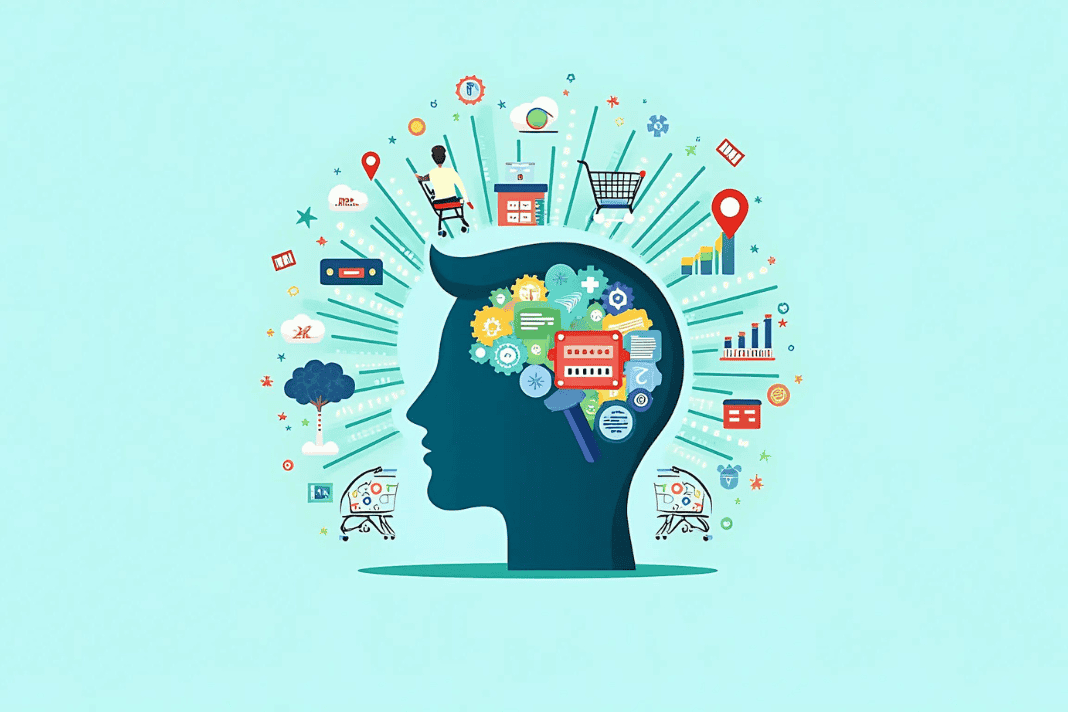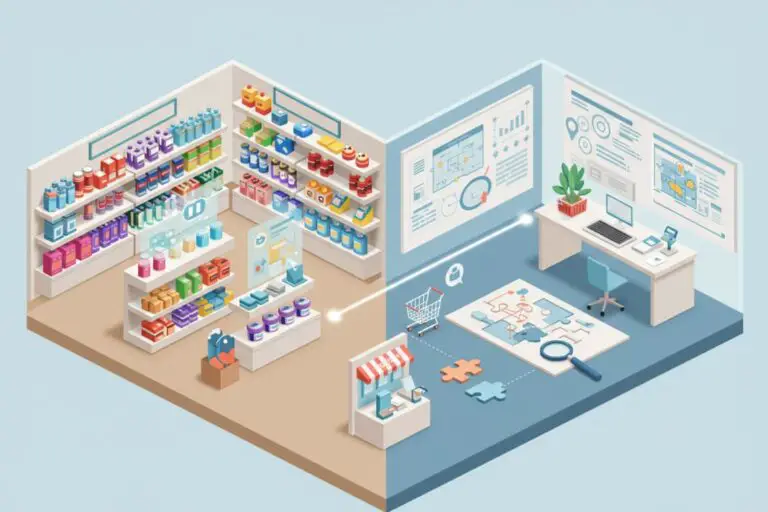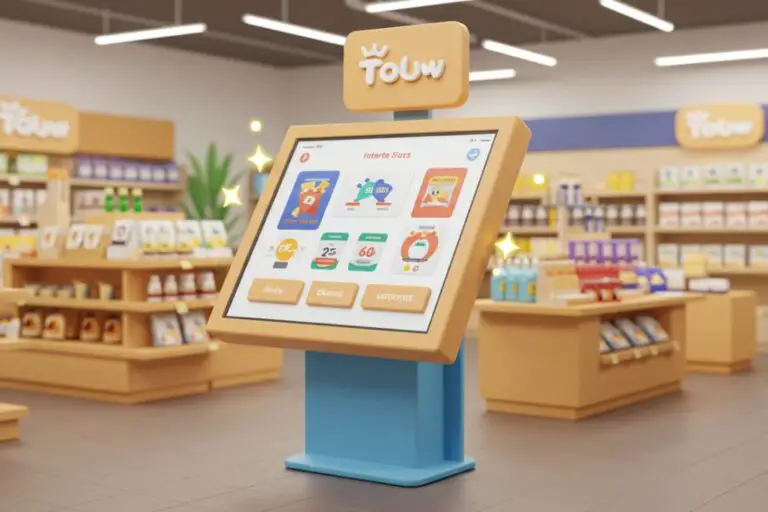Knowing how the human mind works can change the game for brands and manufacturers in retail. Trade marketing psychology looks at the exciting mix of consumer behaviour analysis and how retailers make decisions. By figuring out the many things that impact how retailers choose, promote, and sell products, businesses can build stronger partnerships, increase sales, and make more money.
A new study by the National Retail Federation found that retailers using psychology-based trade marketing strategies saw their yearly revenue increase by 18% on average. This eye-opening fact shows how important it is to understand the psychology behind how merchants behave.
In this thorough examination, we’ll explore the main psychological ideas at work, look at ways to analyze how retailers behave and find helpful ways to apply trade marketing. We’ll also discuss the problems and ethical issues associated with using these methods and look at future trends that are changing the industry.
Key Takeaways
- Understanding the psychological factors influencing retailer decisions is crucial for successful trade marketing
- Cognitive biases and emotional triggers play a significant role in retail purchasing behaviour
- Data-driven insights and behavioural analysis tools can help tailor marketing strategies
- Ethical considerations are essential when applying psychological principles in trade marketing
- Future trends include the integration of technology and cultural factors in retailer behaviour analysis
1. Key Psychological Principles
Cognitive Biases in Retail Decisions
Like everyone, retailers have many cognitive biases that can affect their decisions. Understanding these biases is essential to develop trade marketing strategies that work well.
One prominent example is the phenomenon of loss aversion. Retailers often prefer avoiding losses over acquiring equivalent gains. This bias can manifest when vendors opt for discounted products over potentially more profitable alternatives, fearing the loss of sales or market share.
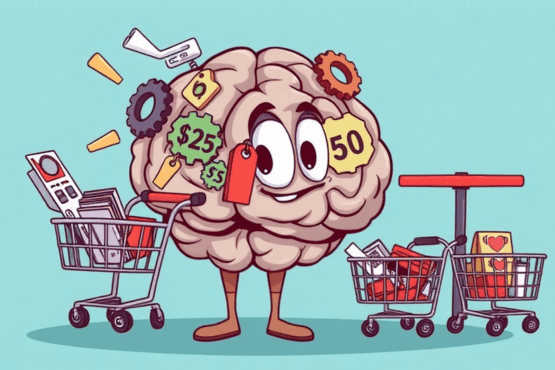
Another cognitive bias to consider is anchoring. This occurs when retailers rely too heavily on an initial piece of information when making decisions. For instance, if a manufacturer presents a high-priced product first, subsequent offerings may seem more reasonable by comparison, even if they’re still relatively expensive.
Case Study:
- Brand: Walmart
- Example: Walmart strategically placed clearance items near the entrance of their stores to leverage the loss aversion bias and encourage impulse purchases.
Emotional Triggers Influencing Purchases
Emotions greatly impact how retailers make decisions, often overriding logical thinking. Successful trade marketers know how to use these emotional triggers to influence retailer behaviour.
A solid emotional trigger is feeling like you belong. Stores often want to stock items that match their brand or appeal to what their customers care about. Think of a health food shop. They might feel drawn to products in green packaging or with organic labels.
Another thing that tugs at emotions is the worry about missing out. Store owners might need to carry the latest trends or special items. They don’t want to disappoint other stores or let their customers down.
Case Study
- Brand: Levi’s
- Example: A popular clothing brand launched a limited-edition collection featuring vintage designs to tap into nostalgia and drive sales.
The Role of Social Proof and Influence
People often look at what others are doing to decide what to do themselves. This happens in stores, too, in a few different ways:
- Best-seller lists: Showcasing top-selling products can influence retailers to stock these items, thinking customers will want them.
- Industry awards: Products that have gained recognition from respected industry groups might seem more appealing to retailers.
- Peer recommendations: Feedback from other retailers or industry experts can affect buying choices.
A real-world example of social proof at work is the story of a small drink company that got a big boost with retailers after a major trade magazine featured it as a “staff pick.” This endorsement led to a 300% jump in new retailer accounts in three months.
The Psychology of Incentives
Incentives can shape how retailers act, but they work best when you get the psychology behind them.
Take volume discounts. They tap into how people like to stick with what they’ve done before. When store owners buy more for a better deal, they’ll keep ordering big to match what they initially did.
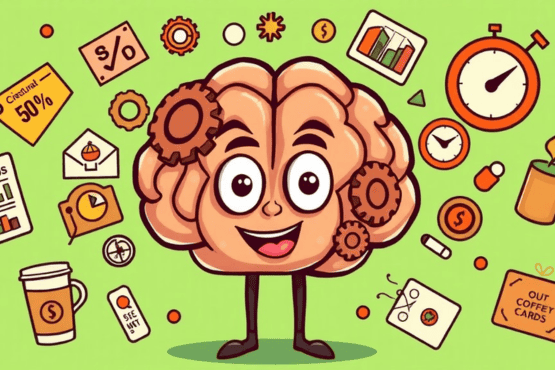
Bonus programs that offer rewards for meeting sales targets leverage the goal-gradient effect. This psychological principle suggests that people increase their effort as they reach a goal. Retailers may push harder to sell a product as they approach the threshold for earning a bonus.
Case Study
- Brand: Starbucks
- Example: A coffee shop offered a rewards-based loyalty program to encourage repeat purchases and increase customer engagement.
2. Retailer Behavior Analysis
Methods for Analyzing Retailer Behavior
To effectively apply psychological principles in trade marketing, it’s crucial to have a solid understanding of retailer behaviour. This can be achieved through a combination of qualitative and quantitative methods:
- Surveys and interviews: Retail feedback can provide valuable insights into their decision-making processes and preferences.
- Point-of-sale (POS) data analysis: Examining sales data can reveal retailer ordering and stocking behaviour patterns.
- In-store observations: Using techniques like heat mapping can show how retailers arrange products and how this impacts sales.
- A/B testing: Experimenting with different marketing approaches can help identify the most effective strategies for different retailers.
Case Study:
- Brand: Tesco
- Example: Tesco uses customer data to optimize product placement, create targeted promotions, and personalize its marketing efforts.
Data-Driven Insights on Decision-Making Processes
Advanced analytics can uncover deeper insights into retailer behaviour. For example:
- Predictive analytics can forecast which products a retailer will order based on historical data and current trends.
- Sentiment analysis of retailer communications can gauge their satisfaction and engagement levels.
- Machine learning algorithms can identify complex patterns in retailer behaviour that might not be apparent through traditional analysis methods.
Case Study: Successful Retailer Behavior Analysis
A large consumer goods company implemented a comprehensive retailer behaviour analysis program that combined POS data, surveys, and in-store observations. By analyzing this data, they discovered that smaller retailers were likelier to increase order sizes when offered personalized product bundles rather than standard volume discounts.
The company used this insight to create tailored bundle offers for small retailers, resulting in a 25% increase in average order value from this segment within six months.
Tools for Retailer Behavior Analysis
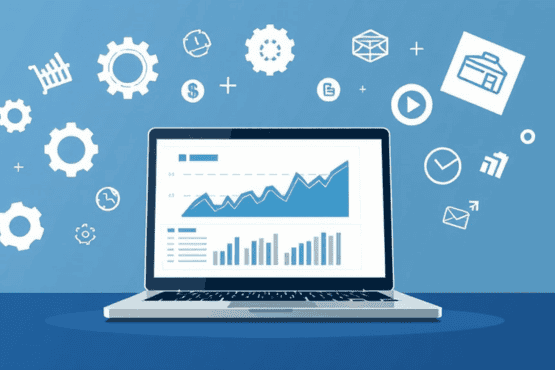
Several tools can aid in analyzing retailer behaviour:
- Customer Relationship Management (CRM) systems can track retail interactions and store valuable data on their preferences and behaviour.
- Advanced analytics platforms: Tools like Tableau or Power BI can help visualize and interpret complex retailer data.
- Retail audit software: These programs can streamline collecting and analyzing in-store data.
- AI-powered predictive analytics tools can forecast retailer behaviour based on historical data and current market trends.
3. Practical Applications in Trade Marketing
Strategies to Leverage Psychological Insights
Understanding the psychology behind retailer behaviour opens up numerous strategies for effective trade marketing:
- Tailored communication: Craft marketing messages that resonate with different retailer segments’ specific needs and pain points.
- Strategic pricing: Depending on the retailer’s target market, use psychological pricing techniques, such as charm or prestige pricing.
- Customized promotions: Design promotional offers that align with the psychological tendencies of different retailer types.
- Product bundling: Create bundles that appeal to retailers’ desire for simplicity and value.
- Storytelling: Use narrative techniques to create emotional connections with retailers and make your brand more memorable.
Example: Tailoring Marketing Messages
Consider a food manufacturer targeting both high-end speciality stores and discount supermarkets. For the speciality stores, marketing messages might focus on the product’s unique qualities, artisanal production methods, and potential for high margins. In contrast, messages to discount supermarkets might emphasize the product’s value for money, broad consumer appeal, and potential for high turnover.
Real-World Trade Marketing Campaign
Coca-Cola started a trade marketing campaign that put several psychological principles to use:
- They created scarcity by offering exclusive in-store promotional items to retailers who ordered above a set amount.
- They used social proof by showing success stories from retailers who had boosted their sales after stocking the product.
- They applied the endowment effect by giving free product samples to retailers, making them feel like they owned the product before deciding to buy.
The campaign led to a 40% rise in new retailer accounts and a 30% increase in order sizes from existing accounts.
Practical Tools and Templates
To implement these strategies effectively, consider using:
- Retailer persona templates: Create detailed profiles of different retailer types to inform your marketing approach.
- Decision tree models: Map out the typical decision-making process of retailers to identify key influence points.
- Emotional appeal matrices: Match different emotional triggers to various retailer segments and product types.
- Incentive program calculators: Design and evaluate the potential impact of different retailer incentive structures.
4. Challenges in Implementing Psychology
Ethical Considerations
While psychological insights have a strong impact on trade marketing, it’s essential to use them ethically:
- Transparency: Be transparent about marketing methods and steer clear of misleading practices.
- Fairness: Make sure that psychological strategies don’t give some retailers an unfair edge over others.
- Respect for autonomy: Avoid persuasive tactics hindering retailers’ ability to make well-informed choices.
- Long-term relationship focus: Emphasize strategies that build lasting partnerships instead of quick wins.
Common Pitfalls and Solutions

- Overreliance on a single psychological principle: Solution – Use diverse strategies tailored to different situations and retailer types.
- Neglecting cultural differences: Solution – Conduct thorough research on cultural norms and adjust strategies for different markets.
- Ignoring individual retailer differences: Solution – Implement personalized approaches based on detailed retailer profiles and historical data.
- Failing to measure effectiveness: Solution – Establish clear metrics and regularly evaluate the impact of psychological strategies.
Balancing Psychological Strategies with Brand Integrity
Maintaining brand integrity while implementing psychological marketing strategies is crucial:
- Align strategies with brand values: Ensure all tactics reflect your brand’s core principles and messaging.
- Focus on mutual benefit: Frame strategies for how they benefit your brand and the retailer.
- Educate retailers: Help retailers understand the rationale behind their strategies to build trust and cooperation.
- Be responsive to feedback: Regularly solicit and act on retailer feedback to show that you value the partnership.
5. Future Trends in Retailer Behavior
Impact of Technology
Emerging technologies are set to revolutionize retailer behaviour analysis and trade marketing:
- Artificial Intelligence: AI can predict retailer needs and personalize marketing strategies at scale.
- Virtual and Augmented Reality: These technologies can provide immersive product demonstrations and training for retailers.
- Internet of Things (IoT): Connected devices can provide real-time data on product performance and retailer behaviour.
- Blockchain: This technology can increase transparency in the supply chain and build trust with retailers.
How Trade Marketing Psychology Differs Across Cultures
As businesses go global, it’s key to grasp how retailers in different cultures think:

- Collectivist vs. Individualist cultures influence how retailers react to social proof and peer pressure.
- Power distance: In cultures with high power distance, retailers tend to have decision-making structures based on hierarchy.
- Uncertainty avoidance: Retailers in cultures that strongly avoid uncertainty tend to accept strategies to reduce risk.
- Long-term vs. Short-term orientation: This affects how retailers respond to different incentives and sales strategies.
Predictions for Evolving Retailer Behavior
Several trends will shape how retailers behave in the future:
- Going green: Stores might stock more earth-friendly goods and use less wasteful packaging.
- Mixing online and in-store: Shopping online and in physical stores will overlap more, calling for combined marketing plans.
- Custom-made for each: Shops will want solutions and messages from those who make products that fit their needs.
- Numbers guide choices: Shops will often use complex data analysis to decide what to buy.
- Working together: Shops and product makers might collaborate, share information and plan to grow.
7. Conclusion
Knowing how retailers think gives trade marketers a decisive edge. They can create better plans that click with retailers and help both sides win by using mental shortcuts, playing on emotions, and tapping into social pressure.
However, using these methods well is key, as it always means being open and focusing on long-term teamwork instead of quick wins. As tech keeps changing and markets spread worldwide, keeping an eye on new trends and cultural differences will significantly affect trade marketing success.
Businesses use psychology in their trade marketing to get retailers more involved, sell more, and build stronger, more profitable ties in the retail world.

